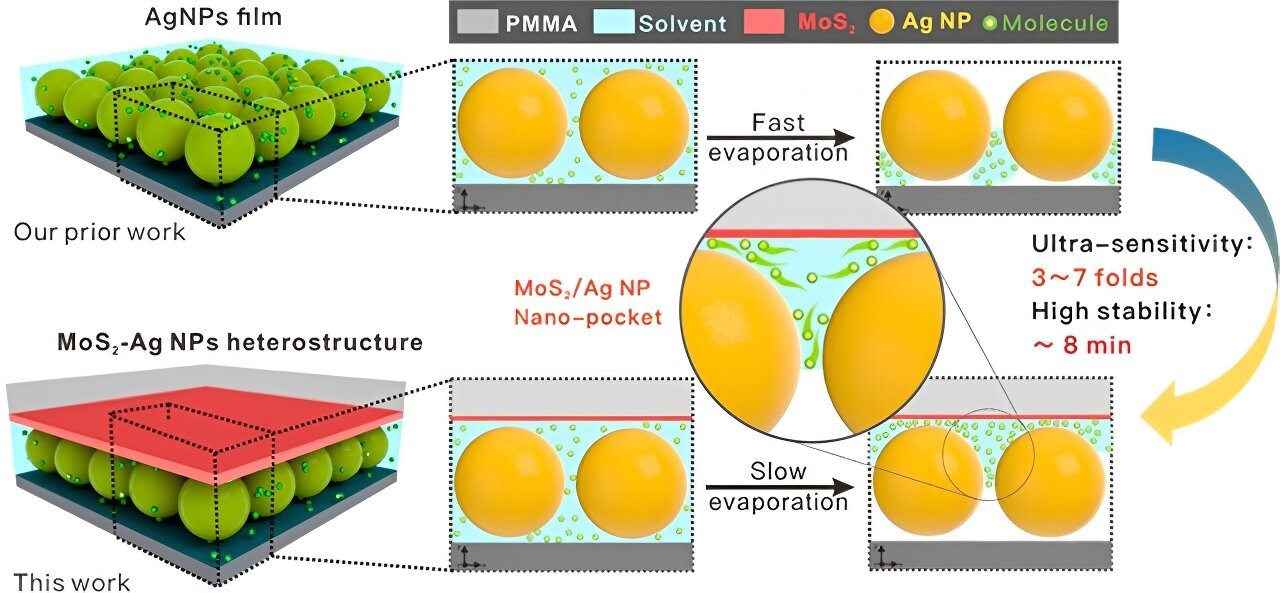In this interview, we discuss a new approach to surface-enhanced Raman spectroscopy that utilizes nano-pockets to capture target molecules, ensuring a highly sensitive way to detect chemical processes.
Please could you introduce yourself and your current research activities?
Chen Siyu graduated with a Ph.D. in plasmon nanophotonics under the guidance of Yang Liangbao, Hefei Institutes of Physical Sciences (HFIPS), Chinese Academy of Sciences (CAS). At present, the topic of "Study on near-field characteristics of single particle nanoparticle with plasmon coupling" is being investigated by surface-enhanced Raman spectroscopy (SERS).
How did you become interested in molecular spectroscopy?
I have been exposed to Raman spectroscopy since I was a graduate student. Raman spectroscopy technology can provide fast, simple, and non-damaging qualitative and quantitative analysis.
Sample modification is not required, and the sample can collect Raman signals directly through the fiber probe or the transparent container wall made of glass, quartz, or plastic.
I think Raman spectroscopy is great as I can quickly obtain all kinds of material information using this technology for scientific research.
What is SERS and how does it work?
Surface-enhanced Raman spectroscopy (SERS) technology, developed in the late 1970s, is a high-sensitivity Raman analysis technology formed by combining the surface enhancement mechanism.
The principle is that when molecules approach or adsorb on the surface of precious metal nanomaterials, the Raman signal can be amplified by multiple orders of magnitude, with extremely high sensitivity. The detection limit of trace substances can reach the level of a single molecule.
The advantages of SERS include a wide detection range, covering 50 ~ 4000cm-1 wave number at a time, the ability to conduct non-destructive testing, a pollution-free process, high sensitivity and its ability to be combined with computer technology for real-time, on-the-spot monitoring. Such characteristics greatly improve the efficiency of analysis.

(top) AgNP/MoS2 nano-pockets" formed by assembling a large-area monolayer nanoparticle film at the liquid-liquid interface (bottom) in a large-area monolayer nanoparticle film covered with the two-dimensional material MoS2. © Cheng Siyu
Could you discuss the results of your latest research?
At present, I mainly studied the near-field characteristics of single particle nanoparticles with plasmon coupling through SERS technology. SERS technology strongly relies on near-field enhancement, and the development of near-field enhancement is conducive to the quantitative study of SERS technology and further the quantitative detection of trace substances.
Why are nanomaterials like MoS2 an exciting pathway for enhancing the functioning of analytical techniques like SERS?
More studies have focused on the composite substrates of noble metals (Au and Ag) and two-dimensional semiconductor materials, such as MoS2, and WS2, to achieve more sensitive, more stable rapid surface-enhanced Raman scattering (SERS) detection.
The composite substrates are considered to be a combination of various kinds of resonance, including surface plasmon, charge transfer, molecular, and exciton laser resonances, remedying the defect of traditional noble metals substrates due to the high cost, poor uniformity, lack of long-term stability and biocompatibility and semiconductor substrates due to the weak interaction between the semiconductor and molecules.
How does this nano-pocket enhanced technique compare to existing SERS methodologies?
The long-term stability and high sensitivity general SERS methods were developed by MoS2/Ag NPs nano-pocket detector using MoS2/Ag NPs heterostructure.
Compared with monolayer Ag NPs film, the MoS2 cover on monolayer Ag NPs film could slow down the evaporation of the solution and could trap target molecules in hot spots, as well as provide a high electric field.
More importantly, the coverage of MoS2 realized the ~8 minutes of efficient and stable detection and presented a high sensitivity with a low concentration of 10-11 mol/L for MG molecules. Anti-tumor drugs 5-FU with a concentration of 10-8 mol/L and dynamic process of hypoxanthine structure changes from enolic form to ketonic form were carried out, indicating long-term stability and high sensitivity of the MoS2/Ag NPs nano-pocket detector.
In short, the MoS2/Ag NPs nano-pocket model can automatically capture the target molecules and retain the molecules in the hot spots for some time and thus offers SERS vast possibilities for practical applications in various fields.
Did the team encounter any challenges in developing this approach?
We encountered some challenges. For example, the preparation and transfer of two-dimensional materials was significantly difficult for this application.
What applications would especially benefit from this new SERS platform?
MoS2/Ag NPs nano-pocket with high-intensity hot spots can actively capture molecules, and the characteristics of highly sensitive and long-term detection of MoS2/Ag NPs nano-pocket are conducive to monitoring some chemical processes.
This method is expected to be applied to the field monitoring of substance transformation or other chemical reaction dynamics in biological systems and lays a foundation for the field characterization of dynamic processes.

© angellodeco/Shutterstock.com
What are the next steps for this research?
Moving forward, we hope to further improve the stability of the method so it can be used to realize real-time dynamic detection of anti-tumor drugs and contribute to clinical medicine.
About Siyu Chen, Ph.D.
 Siyu Chen gained her Ph.D. under the guidance of Prof. Yang Liangbao, Hefei Institutes of Physical Sciences (HFIPS), Chinese Academy of Sciences (CAS) from 2019-2023.
Siyu Chen gained her Ph.D. under the guidance of Prof. Yang Liangbao, Hefei Institutes of Physical Sciences (HFIPS), Chinese Academy of Sciences (CAS) from 2019-2023.
Chen majored in Materials Physics and Chemistry and published four research academic papers as the first/co-first author in SCI TOP journals of the first region of the Chinese Academy of Sciences in this discipline and interdisciplinary disciplines, 3 of which were selected as the main cover.
Now Chen is working as an Assistant Researcher at Anhui University. She is engaged in scientific research on near-field optical properties based on local surface plasmonic and analytical research on classical and quantum phenomena at the nanoscale of near-field two-dimensional semiconductor materials.
Disclaimer: The views expressed here are those of the interviewee and do not necessarily represent the views of AZoM.com Limited (T/A) AZoNetwork, the owner and operator of this website. This disclaimer forms part of the Terms and Conditions of use of this website.